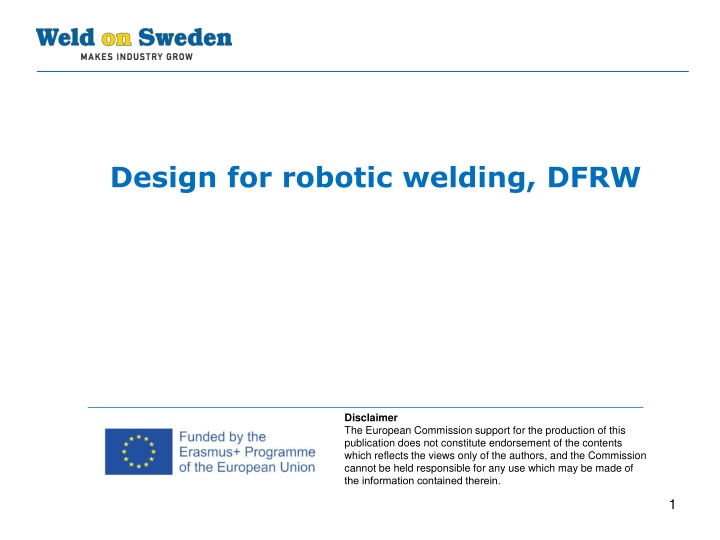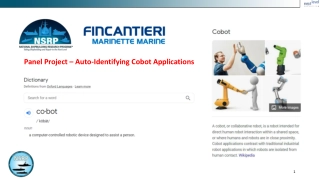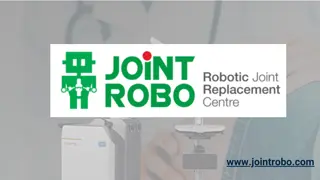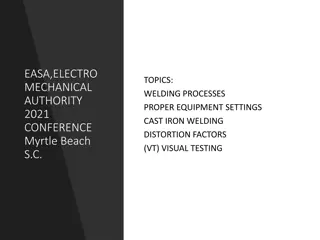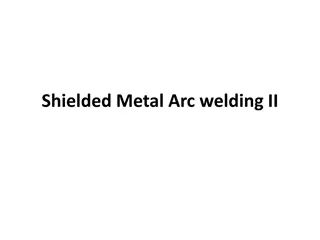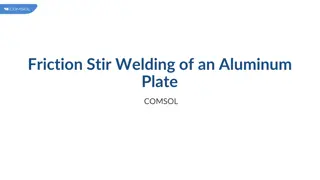Design for robotic welding, DFRW
Discover key considerations for robotic welding design, including joint accessibility, accurate tolerances, self-aligning parts, and modular structures to enhance production efficiency and quality.
Download Presentation

Please find below an Image/Link to download the presentation.
The content on the website is provided AS IS for your information and personal use only. It may not be sold, licensed, or shared on other websites without obtaining consent from the author.If you encounter any issues during the download, it is possible that the publisher has removed the file from their server.
You are allowed to download the files provided on this website for personal or commercial use, subject to the condition that they are used lawfully. All files are the property of their respective owners.
The content on the website is provided AS IS for your information and personal use only. It may not be sold, licensed, or shared on other websites without obtaining consent from the author.
E N D
Presentation Transcript
Design for robotic welding, DFRW Disclaimer The European Commission support for the production of this publication does not constitute endorsement of the contents which reflects the views only of the authors, and the Commission cannot be held responsible for any use which may be made of the information contained therein . 1
DFRW: Basic prerequisites The designer must be more aware of the production Important with cooperation design-production Should the product be welded? Bending Casting Forging Gluing (Adhesive strength at least equivalent to Al) Riveting 2
Extra important for robotic welding Can the joint be reached? The accessibility to the joint for the welding gun and safe distance to the robot depends on the design of the product. 3
Extra important for robotic welding Do the details have accurate tolerances? A robot cannot compensate for dimensional deviations in the components involved and thus requires tighter tolerances Avoid welding near a bent radius. If the bending radius varies, the gap changes and the weld becomes incorrect. The right type of joint for robot welding? Avoid Edge and Butt welds 4
Extra important for robotic welding Are the parts self-aligning have well defined positions? Design of built-in guide lugs and recesses Steering towards other parts in at least three directions Self-aligning parts simplify production. 5
Right conditions for robotic welding Does the construction have a weld-free side? Positioners or manipulators require that the product has a weld-free surface for holding. Weld-free surface Can the joint be welded horizontally? Design the product so that welding can take place in the horizontal plane. 6
Product structure Is the product divided into modules? Modular construction provides better accessibility and often less deformation of the finished product Is the number of components minimized? Reduce the number of components e.g. by bending or other processing. 7
Product structure Is welding near shape-sensitive parts avoided? Avoid welds near shape-sensitive parts. Threaded holes can be damaged if a weld is placed too close. Place the weld where the load is lowest! By placing the weld where the load is not high, the amount of weld and welding requirements can be reduced. 8
Design Is the amount of weld minimized? Select the smallest possible throat thickness. Max a6 can be placed with one string. Possible with continuous weld with varying a-dimensions. Intermittent or sometimes with spot or plug welds. Use the penetration in fillet welds for reducing throat thickness. Reduce the amount of welding by cutting complex contours. Minimize the amount of welding, by bending, intermittent weld or cutting parts with complex geometry. 9
Design Do not take up tolerances in the weld joint! Do not allow that tolerances of parts to affect the position of the weld joint. Does the product have the right tolerances? 40 +_ 40 0,3 Too accurate tolerances means large costs in manufacturing 10
Dimensioning Is the lowest acceptable welding class used? Occurrence of welding defects determine whether a weld meets the requirements for the specified welding class. Do the parts have the same thickness? Large dimensional differences lead to differences in cooling rate for the components during welding 11
